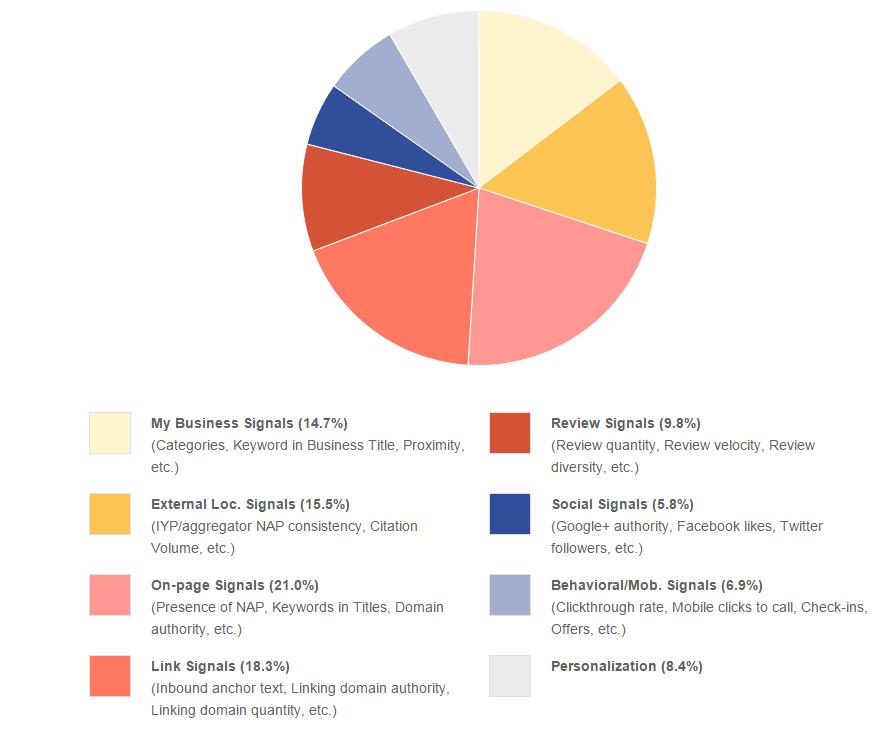Hot on the heels of the latest Penguin update, marketers are scrambling to measure its effects. Penguin 3.0, the first update since October 4, 2013, completed its rollout early Monday, October 20. That’s right, those who were hit by the last Penguin update waited more than a year without an update or refresh to see if their cleanup efforts had done the trick.
As if elusive penguins weren’t enough to worry about, marketers and brands have also had to contend with the finicky new local search algorithm Pigeon, which launched in July this year. Designed to provide more useful and relevant local search results, Pigeon brought hundreds of traditional Web search algorithm factors into play for local search. It also improved on distance and location ranking parameters.
Late in September, Google also released the Panda 4.1 update, affecting 3 to 5 percent of queries – just to keep things interesting.
In the constantly shifting local search landscape, where it can feel like the targets are forever on the move (and interspersed with furry and feathered but unfriendly animals), what’s a marketer to do?
Pigeon- and Penguin-Proofing Local Search
A year is an awful long time to wait out an algorithmic penalty – longer than many brands can afford. Though Google has suggested they’ll refresh Penguin more often from here on, there are no guarantees.
We recently did a client survey at Rio SEO of the top retailers (those with hundreds of thousands of visits) and examined search traffic analytics right after the Pigeon update. What we found was that those with optimized local landing pages saw a 10 to 20 percent increase in traffic to those pages from search and an average of a 20 percent increase in their local positions on SERPs (ie: local map positions, etc.).
You don’t often hear these stories right after an algorithm update; typically, doom and gloom stories of the biggest losers plaster the Web. In every algorithm update, though, those who have prepared and followed best practices rise above when the biggest losers fall.
If you want to be one of the former, read on.
Tracking and Measuring the Effects of Algorithmic Changes
Beyond anecdotal evidence, how can you tell if your site has been impacted (either positively or negatively) by a Google algorithm update? Accurate tracking, measuring, and reporting on the key performance indicators (KPIs) that actually matter is key.
These include, but are not limited to:
-
- Your rankings on the big search engines
- Rankings in local search
- Citation consistency across the ecosystem
- Traffic from all engines, directories, and niche sites
- Link activity analytics
- Number of reviews per location
- Average review ratings
You can learn more about each of these and how to use them for local search success in my last column on defining local SEO KPIs.
Improve Your Local Search Strategy With Best Practices for Organic and Local Results
Each year, Moz conducts a survey of industry experts on local search ranking factors. The 2014 survey results were released in September and this year, Moz asked survey respondents to rate specific factors that contribute to rankings across pack/carousel and localized organic results. Participants also addressed which factors have increased or decreased in importance since the introduction of the Penguin algorithm.
The study points to critical areas of focus for local marketers. If you need to prioritize your optimization efforts, start with these areas identified as most impactful by local search experts (just don’t forget to move on to the rest afterward!).
First, experts ranked the influence of eight groups of ranking factors across the two types of local results: pack/carousel and localized organic. You can see more on Moz’s methodology here.

Image Credit: Moz
On-page signals (21 percent) – the presence of name, address, phone number (NAP); link signals, and external location signals – ranked most important, according to industry experts.
Looking into the factors ranked most important for either pack/carousel or localized organic results, we see different areas of focus that point to opportunities for marketers struggling in one area of the other:

In localized organic search results, industry experts rated on-page signals and link signals as of almost equal importance. Together, they are considered about equally as influential as all other factors combined.
For pack/carousel results, however, experts feel on-page signals are far less significant – and link signals even less so. My business signals – categories, keyword in business title, proximity, etc. – are considered significantly more important here than for localized organic results. External location signals like YP and aggregator NAP consistency and citation volume are also given more weight for pack/carousel results by industry experts.
Moz identified the top five localized organic ranking factors as:
- City, state, and landing page in title
- Domain authority of the website
- Page authority of the landing page URL
- Quality and authority of inbound links to the domain
- Quality and authority of inbound links to the landing page URL
Their top five pack/carousel ranking factors are:
- Physical address in city of search
- Proper category associations
- Consistency of structured citations
- Quality/authority of structured citations
- HTML NAP matching My Business Page NAP
For the full list of Moz’s top 50 local ranking factors segmented by localized organic and pack/carousel and commentary from their survey experts, see The 2014 Local Search Ranking Factors.

